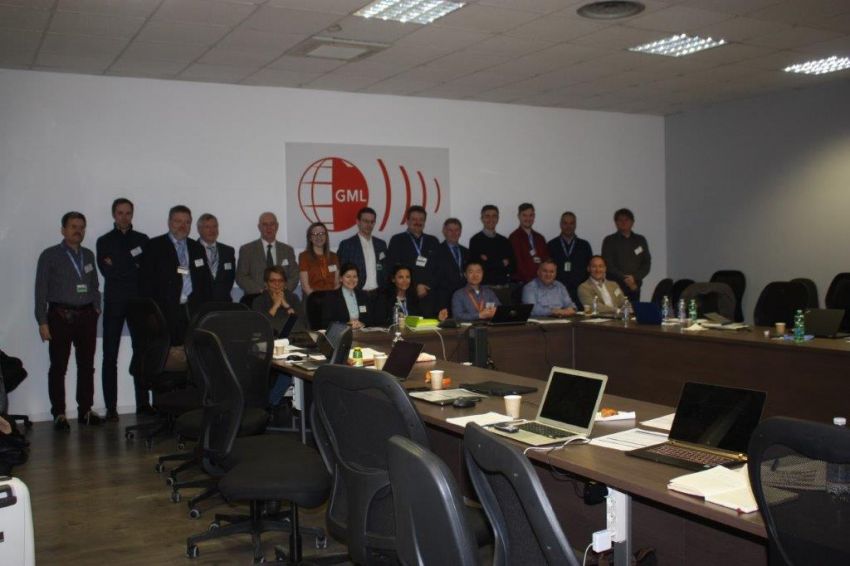Announcements

A Νew Εra of laser manufacturing in Europe – Α step closer to reality
Lasers have become a common feature of everyday life, from laser pointers to laser engraved iPhones and mass-produced laser etched articles in all shapes, sizes and materials. The power of lasers has multiplied many times and they now have sufficient energy to cut and weld thick steel as used in heavy manufacturing.
New opportunities are emerging for laser manufacturing using pulsed lasers. These lasers, known as ultrafast lasers, instead of delivering a constant beam of high-power light, which generates enormous amounts of difficult to control heat, generate very short bursts of light at extremely high energy meaning much greater control of the process and less heat. The pulses are so fast that their duration is measured in femtoseconds (a femtosecond is to a second as a second is to about 32 million years).
Europe leads the world in laser and photonics technologies, and maintaining this lead is so important that the European research programme H2020 and the Photonics Public Private Partnership, Photonics 21 have launched a new research collaboration to take the next steps in developing the highest power ultrafast lasers for manufacturing.
The project named PULSE, which kicks-off in January at the Chrysler Fiat Research Centre in Turin, involves a consortium of outstanding industrial and academic research partners from across Europe. The aim is to develop a complete laser system with an average power of 2.5kW and 100kW in a single pulse, sufficient to cut the hardest Boron steel used in car construction, combined with the control and refinement to etch moulds for vehicle parts at unimaginable speeds and with micron scale accuracy, and micro-welding of dissimilar metals for solar thermal absorbers.
With this enormous amount of energy, the laser itself is only part of the story, to make it work new solutions to handle such fast and high-power beams will be developed with capabilities already demonstrated in principle by the consortium to precisely target the laser at a speed of more than 5,000 km per hour over a material surface.
Within 3 years the partners will demonstrate unmatched speed in materials processing with minimal heat impact using a highly automated system harnessing special programmes and fast computers to enable highly competitive digitally integrated design and production workflows. The results will be game-changing for manufacturing processes like vehicle production, welding different metals together for heat exchangers and the manufacture of parts and tools for a limitless number of uses.
Manufacturing industries are keen to adopt laser-based production using systems that support high-precision and enable fast and flexible mass customisation and are also cost-competitive and resource-efficient. The anticipated improvements in manufacturing quality and process efficiency for laser engraving and laser cutting will have wide ranging applications from electronics and medical devices to textiles and from automotive to consumers’ goods.
Foundation for Research and Technology – Hellas, is one of the largest research centres in Greece. It consists of eightinstitutes spread over five cities. The Institute of Electronic Structure and Laser employs over 250 people, distributed into 3 divisions: Materials and Devices, Theoretical and Computational Physics and Chemistry, and Lasers and Applications.
FOUNDATION FOR RESEARCH AND TECHNOLOGY – HELLAS will develop and demonstrate technology for novel high-power beam combiners and tailored beam shaping for materials processing using Diffracting Optical Elements.
Dr. Maria Farsari, Research Director at the Institute of Electronic Structure and Laser said: “It’s a multidisciplinary approach combining chemistry, laser materials processing and 3D printing to make compact optical elements for the high-power laser to be developed by the PULSE consortium, and for broader photonics applications.”
Consortium partners
1 TAMPERE UNIVERSITY (FINLAND - Coordinator)
2 ASTON UNIVERSITY (UK)
3 AMPLICONYX OY (FINLAND)
4 LUNOVU GMBH (GERMANY)
5 NANOTYPOS (GREECE)
6 FOUNDATION FOR RESEARCH AND TECHNOLOGY HELLAS (GREECE)
7 PRIME LASER TECHNOLOGY (GREECE)
8 FIAT RESEARCH CENTRE (ITALY)
9 MODUS RESEARCH AND INNOVATION LIMITED (UK)
10 MITTWEIDA UNIVERSITY OF APPLIED SCIENCES (GERMANY)
11 CO ONOSTAMPI SRL (ITALY)
12 CERAM OPTEC SIA (LATVIA)
Funding:
The project has a budget of more than €5 million over a period of 4 years.
The PULSE project is an initiative of the Photonics Public Private Partnership, www.photonics21.org.
This project has received funding from the European Union’s Horizon 2020 research and innovation programme under grant agreement No 824996.
Horizon 2020 is the biggest EU Research and Innovation programme ever with nearly €80 billion of funding available over 7 years (2014 to 2020) – in addition to the private investment that this money will attract. It promises more breakthroughs, discoveries and world-firsts by taking great ideas from the lab to the market.
Horizon 2020 is the financial instrument implementing the Innovation Union, a Europe 2020 flagship initiative aimed at securing Europe's global competitiveness.
Seen as a means to drive economic growth and create jobs, Horizon 2020 has the political backing of Europe’s leaders and the Members of the European Parliament. They agreed that research is an investment in our future and so put it at the heart of the EU’s blueprint for smart, sustainable and inclusive growth and jobs.
This communication reflects only the author's view and the EC is not responsible for any use that may be made of the information it contains.
Target media for release
https://www.bbc.co.uk/news/10725415








